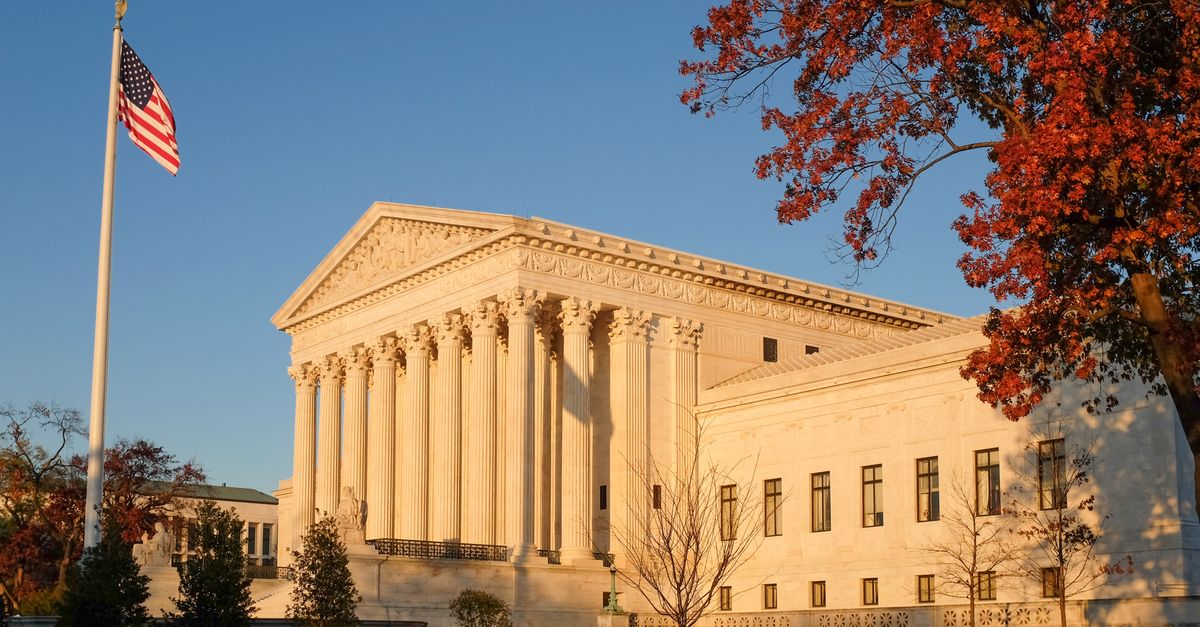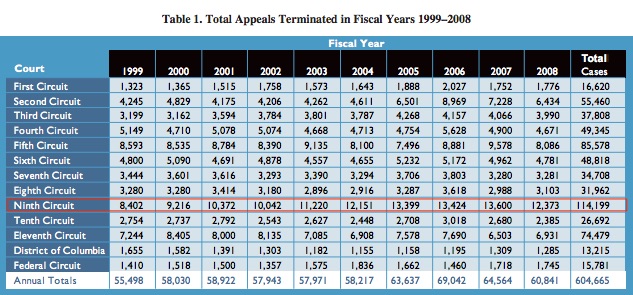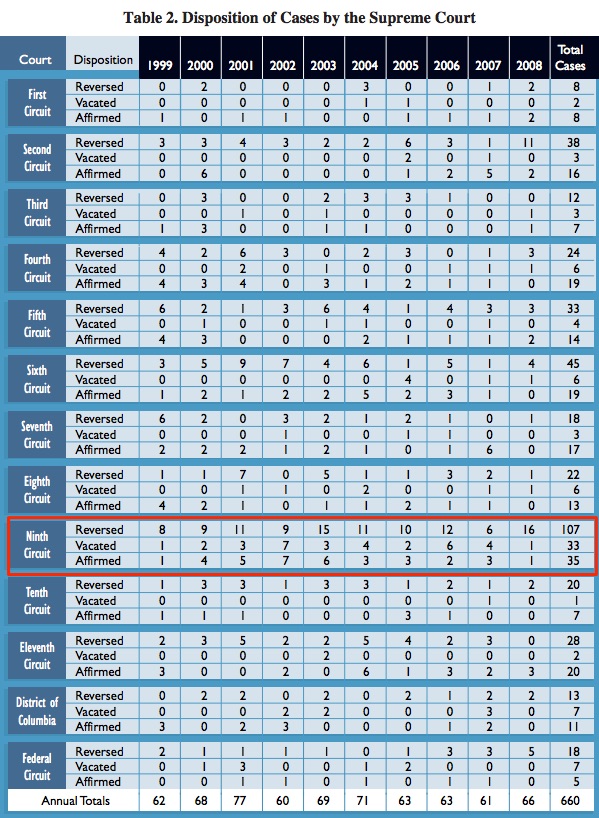Among the less than one tenth of one percent of circuit court decisions reviewed by the Supreme Court, about 80 percent of the Ninth Circuit Court's decisions were overturned.
The Supreme Court has neither reviewed nor overturned eighty percent of Ninth Circuit Court's decisions.
Following a 9 February 2017 Ninth Circuit Court of Appeals decision upholding an injunction that halted a temporary U.S. entry restriction enacted via an Executive Order on 27 January 2017, social media users began sharing posts holding that approximately 80 percent of the decisions handed down by that court were eventually overturned by the U.S. Supreme Court (SCOTUS).
Many of those users cited a 9 February 2017 blog post which asserted that:
Eight of out of 10 cases from the 9th Circuit reviewed by the Supreme Court are overruled, according to a 2010 analysis published by the American Bar Association. The 9th Circuit, which is known for its liberal tendencies, has the second-highest reversal rate of the 13 appellate courts below the Supreme Court.
The blog linked to a 2010 American Bar Association paper which opened by pointing out two common erroneous beliefs about Supreme Court reversals in general:
When the subject of Supreme Court reversal rates arises, two common perceptions usually come to mind. First, the Ninth Circuit is the “rogue circuit.” Second, the Supreme Court only takes cases that it intends to reverse. An empirical study of Supreme Court dispositions of cases from the courts of appeals during the last 10 Terms reveals that neither of these common perceptions is true.
Each year the federal courts of appeals collectively terminate an average of 60,467 cases. However, the Supreme Court only reviews an average of 64 cases per year, which is about 0.106% of all decisions by the federal courts of appeals.
So, although correctly worded, the blog post left many readers with the mistaken impression that 80 percent of the Ninth Circuit Court's decisions were being overturned by SCOTUS. What it actually said was that of the very tiny fraction of decisions by federal courts of appeal that SCOTUS agrees to review each year (0.1%), 80 percent of that small portion of appeals originating with the Ninth Circuit Court were overturned.
With respect to how the Ninth Court came to be described as a "rogue court," the paper referenced above maintained:
So how did the Ninth Circuit get the reputation for being the “rogue circuit”? Well, “figures don’t lie, but liars figure.” One measure of a circuit’s success “is the extent to which its decisions have been reviewed and reversed or vacated by the Supreme Court.”
Reversal rates for each court of appeals would be very small, in the range of a tenth of a percent, if calculated as the total number of cases reversed over the total number of appeals terminated by that court. Conversely, if the reversal rate is calculated as the total number of cases reversed over the total number of cases reviewed by the Supreme Court, the ratio increases dramatically. So, in the big picture, i.e., considering all of the appeals terminated by each circuit, reversal rates for all courts of appeals could be very low, if calculated by the former method, or very high, if calculated by the latter method.
The paper contained three tables tallying specific circuit court figures for the period between 1998 and 2008:
With respect to the figures provided in the tables, the paper held that they did not seem to support the notion that SCOTUS "only takes cases that it intends to reverse or vacate":
For the purpose of comparing one court’s “performance” against another’s, it makes more sense to compare reversal rate calculated as the ratio of cases reversed over cases reviewed. On that basis, Figure 2 compares the Supreme Court’s reversal rates for all courts of appeals over the course of the last 10 Terms. Table 3 shows the actual number of cases reversed and total cases reviewed, as well as the corresponding percentages used to create Figure 2.
The reversal rates in Figure 2 range between 55% and 84%. Interestingly, this comparison of reversal rates reveals that the Federal Circuit has the highest reversal rate at about 83.33%, and the Ninth Circuit has the second highest reversal rate at 80%. The Seventh Circuit has the lowest reversal rate at 55.26%. The median reversal rate is 68.29%. ... Do reversal rates of 80% and 83%, for the Ninth Circuit and Federal Circuit, respectively, compared to a median reversal rate of 68%, call for the label “rogue” courts?
Figure 3 compares affirmance rates to reversal rates for each court. The Supreme Court affirmed over 40% of all cases granted certiorari from the First, Seventh, and Eleventh Circuits. In fact, the median affirmance rate is about 31.71%, with only two courts falling below 25%, again, the Ninth and Federal Circuits. If the Supreme Court granted certiorari only to review cases that it intends to reverse or vacate, the affirmance rates should be significantly lower. These statistics indicate that the Court is more likely interested in taking cases to resolve circuit splits, to resolve uncertainty in the law, or to determine important legal or constitutional issues.
In short, social media claims that 80 percent of cases decided by the Ninth Circuit were overturned were flat out false; more than 99 percent of that circuit's decisions stood and the Supreme Court reviewed a scant 0.106 percent of circuit court cases each year. Although figures from 2010 maintained the "Ninth Circuit [had] the second highest reversal rate at 80 [percent]," the "highest" was the Federal Circuit court's median of 83 percent. However, left out of both the rumors and the blog post was the fact that the average rate of accepted cases ruled upon differently by the Supreme Court than a lower circuit court was over 68 percent across all courts. So of less than one percent of all cases reviewed by the Supreme Court, 68 percent of decisions across all circuits were overturned. Eighty percent of decisions by the Ninth Circuit were overturned when escalated to the Supreme Court, but the numbers were misleading taken out of context.




